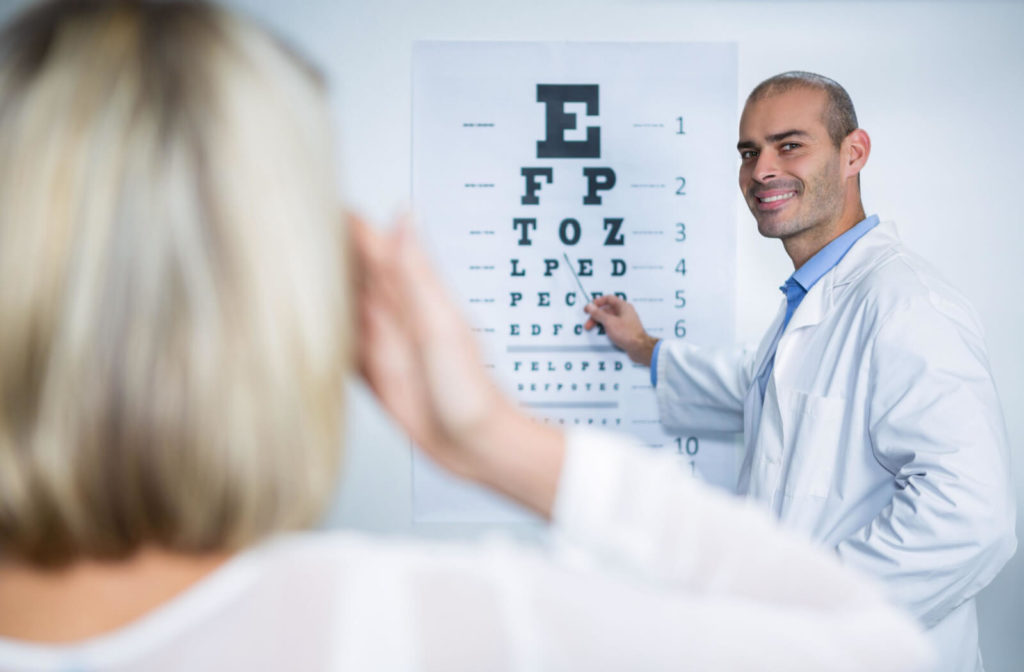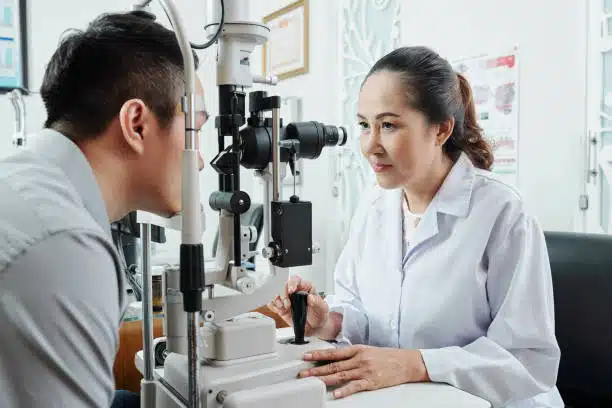Discover the most effective Optometrist Chino for Comprehensive Eye Care
Wiki Article
Discovering the most recent Technological Developments in Optometry and What They Mean for Optometrists
From the precision of Optical Comprehensibility Tomography to the nuanced insights used by AI-driven analysis tools, these innovations are setting brand-new criteria in client analysis and therapy. As these advancements permeate the technique, optometrists are faced with the difficulty of accepting these tools to improve individual end results.Developments in Diagnostic Equipment
Progressing the area of optometry, advancements in diagnostic tools have actually changed the means eye care professionals evaluate and diagnose ocular problems and visual problems. The past decade has actually observed substantial technical improvements, allowing more accurate and thorough analyses.An additional secret innovation is the intro of advanced corneal topography systems, which map the surface curvature of the cornea with precision. These devices are particularly valuable for fitting call lenses and diagnosing corneal conditions. In addition, digital retinal imaging has actually transformed typical ophthalmoscopy, using detailed, scenic sights of the retina that help with thorough visual exams.
The development of wavefront aberrometry has likewise been crucial, allowing the analysis of refractive errors with unequaled accuracy (Eye Doctor Optometrist). This modern technology assists in tailoring restorative lenses and improving surgical results for refractive surgical procedures. Jointly, these analysis innovations empower eye doctors to provide remarkable person treatment, guaranteeing early treatment and tailored treatment approaches, inevitably enhancing visual health and wellness outcomes
AI in Person Monitoring
Structure on the structure of innovative diagnostic devices, the unification of man-made intelligence (AI) in person management stands for a transformative leap for optometry. AI systems are significantly utilized to improve efficiency, accuracy, and customization in client care.Furthermore, AI-driven systems help with streamlined person interactions and management procedures. Automated organizing, online consultations, and customized follow-up plans not only improve individual satisfaction but likewise maximize time administration for experts. These systems can triage clients based upon the necessity of their conditions, making sure that those in vital demand receive prompt attention.
In addition, AI enhances decision-making by supplying optometrists with evidence-based referrals and therapy paths. By incorporating information from electronic health and wellness documents, AI devices supply insights that inform scientific choices, minimizing the risk of errors and enhancing person outcomes. As AI remains to progress, its role in client administration will likely increase, reshaping the landscape of optometric treatment.
Advances in Retinal Imaging
In the world of optometry, retinal imaging has actually experienced amazing technological improvements that are improving diagnostic capacities and client care. Advancements such as Optical Coherence Tomography (OCT) and fundus photography have transformed exactly how eye doctors envision and examine the retina.Boosted imaging techniques like OCT angiography are more refining diagnostic accuracy. Eye Doctor. Such innovations promote the identification of min retinal modifications that could indicate disease progression.
Furthermore, improvements in synthetic knowledge are boosting retinal imaging by enabling computerized evaluation of large datasets. These systems assist eye doctors in determining patterns a sign of pathology, therefore enhancing analysis accuracy and efficiency. Collectively, these advancements are transforming retinal imaging right into a keystone of modern eye care, enhancing end results and expanding therapeutic possibilities.
Teleoptometry's Expanding Duty
Teleoptometry is increasingly ending up being an essential element of eye treatment, driven by innovations in data and diagnostic tools. As optometry embraces digital transformation, teleoptometry promotes remote assessments, allowing optometrists to extend their services beyond standard limits. This is especially helpful in rural and underserved locations where access to specialized eye care is usually restricted. By leveraging high-resolution video conferencing and advanced retinal imaging, optometrists can carry out comprehensive eye exams from afar, ensuring prompt medical diagnosis and treatment.The combination of expert system (AI) more improves teleoptometry, enabling the analysis of visual information and assisting in the detection of eye conditions such as glaucoma and diabetic retinopathy. AI-powered formulas can swiftly analyze complicated imaging information, supplying eye doctors with valuable understandings that bolster medical decision-making.
Moreover, teleoptometry sustains continuity of treatment through seamless integration with digital health records (EHRs), enabling optometrists to keep extensive patient backgrounds. This makes certain that clients receive personalized and regular treatment even when speaking with different experts.
Regardless of these advantages, difficulties continue to be, including ensuring data safety and taking care of patient assumptions. Teleoptometry stands for a substantial stride in the direction of even more accessible, reliable, and patient-centered eye care. As modern technology evolves, its role is poised to broaden additionally.

Future Patterns in Eye Care
A myriad of innovative trends is readied to reshape the future of eye care, driven by technological improvements and the evolving needs of patients. One significant fad is the integration of expert system (AI) in diagnostics, which guarantees to improve the precision and efficiency of eye assessments. AI algorithms can assess vast amounts of data from retinal images, potentially discovering More Bonuses conditions like diabetic retinopathy and glaucoma earlier than conventional approaches.Furthermore, individualized medicine is gaining traction in optometry, with genetic screening notifying customized therapy strategies. This method aims to maximize individual outcomes by customizing treatments to individual hereditary profiles. Wearable technology, such as clever get in touch with lenses, is also on the horizon, using real-time monitoring of intraocular stress or glucose levels, therefore offering continual insights right about his into systemic and eye health.
The fostering of augmented truth (AR) and online fact (VR) in training and person education and learning is an additional emerging trend. These modern technologies supply immersive experiences that can boost understanding and abilities both for optometrists and individuals. As these trends advance, optometrists need to stay abreast of technical developments to provide cutting-edge treatment, making certain improved person end results and contentment in the dynamic landscape of eye care.
Verdict

Jointly, these analysis innovations equip optometrists to deliver exceptional client treatment, ensuring very early intervention and customized therapy methods, eventually improving aesthetic wellness results.

As these technologies continue to advance, optometrists must adjust and include them into method, inevitably optimizing workflow effectiveness and boosting the standard of eye care delivered to individuals.
Report this wiki page